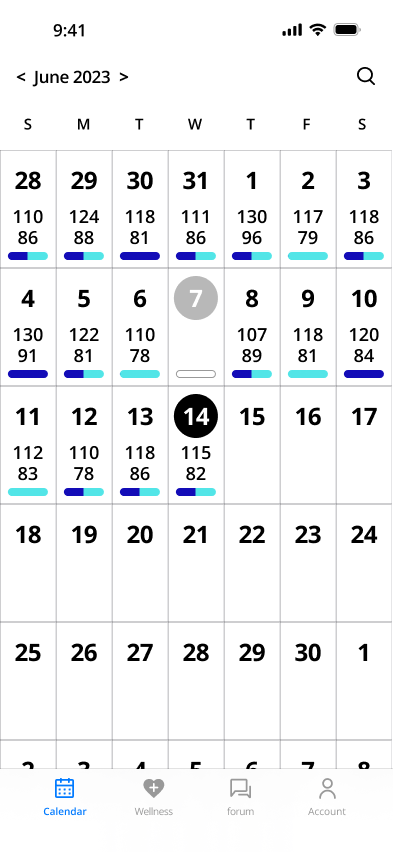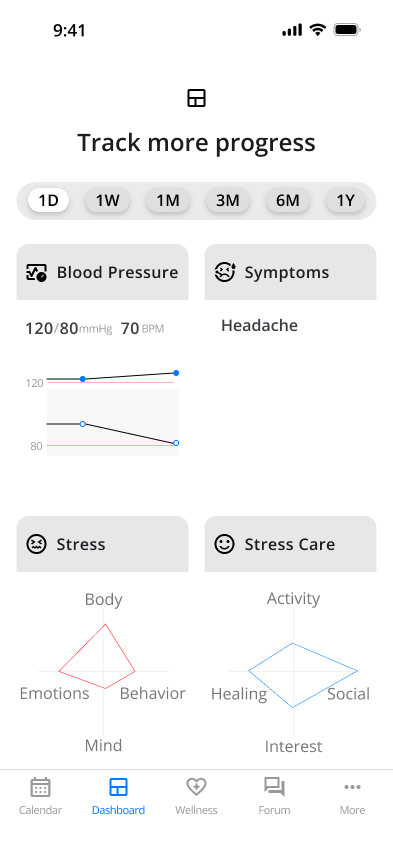1. Project background and purpose
The BP Mind app aims to engage with health by understanding the relationship between stress and blood pressure, enhancing motivation for blood pressure management, and actively supporting improvements in overall health. While it is widely known that stress affects blood pressure, accurately understanding and managing this impact remains challenging. BP Mind focuses on the fluctuations in blood pressure influenced by stress. By recording and visualizing blood pressure, stress levels, stress management practices, and symptoms, the app facilitates understanding of changes and patterns, helping to raise awareness of effective treatment and health management.





.png)


















